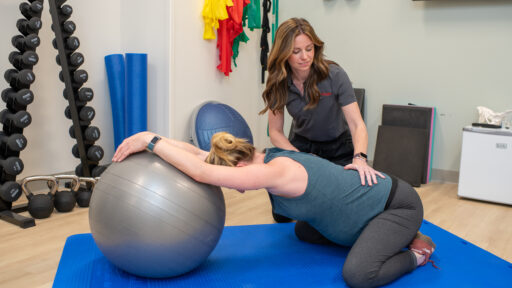Relaxation techniques in physical therapy are specific methods used to reduce muscle tension, pain, and stress, which can aid in recovery and improve overall physical function. These techniques help patients manage pain, improve mobility, and promote a sense of well-being during rehabilitation. Below are some common relaxation techniques used in physical therapy:
1. Progressive Muscle Relaxation (PMR)
- Description: A technique where patients are guided to systematically tense and then relax different muscle groups, helping to relieve muscle tension.
- Application in Physical Therapy: This helps patients become aware of the difference between tension and relaxation, and it can reduce overall muscle tightness, particularly in those with chronic pain or muscle spasm.
2. Deep Breathing (Diaphragmatic Breathing)
- Description: A controlled breathing technique that involves deep inhalation from the diaphragm and slow, controlled exhalation.
- Application in Physical Therapy: Deep breathing is often used in combination with exercises or during stretching to help calm the nervous system, improve oxygen flow to muscles, and promote relaxation.
3. Heat Therapy
- Description: The application of heat to muscles to promote relaxation by increasing blood flow and loosening tight muscles.
- Application in Physical Therapy: Common methods include heat packs, warm baths, or paraffin wax treatments. Heat therapy helps reduce stiffness and makes muscles more pliable, allowing for easier stretching and movement during therapy.
4. Massage Therapy
- Description: Physical manipulation of the muscles and soft tissues to release tension, reduce pain, and improve circulation.
- Application in Physical Therapy: Therapists use various massage techniques (e.g., Swedish, deep tissue) to relax muscles and prepare them for active exercises, helping to relieve pain and improve flexibility.
5. Joint Mobilization and Stretching
- Description: Gentle, passive movements or stretches of the joints and muscles to improve range of motion and reduce tension.
- Application in Physical Therapy: Often used to alleviate stiffness in areas like the neck, shoulders, and lower back, joint mobilization helps relax the surrounding muscles and increase functional mobility.
6. Biofeedback
- Description: A technique that uses sensors to monitor physiological responses (like muscle tension) and provides real-time feedback to help patients learn to control these responses.
- Application in Physical Therapy: Helps patients become aware of involuntary muscle tension and teaches them how to consciously relax their muscles, reducing pain and enhancing muscle coordination.
7. Myofascial Release
- Description: A hands-on technique that involves applying gentle, sustained pressure on the myofascial connective tissue to relieve pain and restore motion.
- Application in Physical Therapy: Myofascial release helps in releasing tight, stiff areas of the body (trigger points) and can provide relief from muscle tension, promoting relaxation.
8. Tai Chi or Yoga-Based Movements
- Description: Gentle, slow movements combined with controlled breathing to improve flexibility, balance, and relaxation.
- Application in Physical Therapy: These techniques are adapted in rehabilitation programs to reduce tension, improve joint function, and promote mental and physical relaxation, particularly in patients with chronic pain or balance issues.
9. Postural Training
- Description: Educating patients on proper body alignment and ergonomics to reduce muscle tension and strain.
- Application in Physical Therapy: Poor posture can lead to chronic muscle tension and pain. By teaching proper posture, physical therapists help reduce unnecessary strain and promote relaxation in the muscles.
10. Electrical Stimulation (TENS)
- Description: Transcutaneous electrical nerve stimulation (TENS) uses low-voltage electrical currents to stimulate nerves and relieve pain.
- Application in Physical Therapy: This can reduce muscle tension and pain in specific areas, promoting relaxation and easing muscle stiffness, especially in patients with chronic pain or muscle spasms.
11. Hydrotherapy (Aquatic Therapy)
- Description: Exercise or therapy performed in a warm water environment to relieve muscle tension and pain.
- Application in Physical Therapy: The buoyancy of water reduces the load on joints and muscles, while the warmth helps to relax tight muscles, making it easier for patients to move and stretch without discomfort.
12. Meditative Techniques and Visualization
- Description: Guided visualization and mindfulness exercises to promote mental and physical relaxation.
- Application in Physical Therapy: Therapists might guide patients through relaxation techniques involving visualization to reduce muscle tension, calm the mind, and ease pain.
13. Cold Therapy (Cryotherapy)
- Description: The application of cold to reduce inflammation and muscle spasms, which can indirectly lead to muscle relaxation.
- Application in Physical Therapy: Used to treat acute injuries and reduce swelling, cold therapy can help relax muscles once inflammation has been controlled.
14. Pelvic Floor Relaxation Techniques
- Description: Specific exercises and biofeedback aimed at reducing tension in the pelvic floor muscles.
- Application in Physical Therapy: Particularly used in patients with pelvic pain or dysfunction, these techniques help relax and coordinate the muscles in the pelvic region.
Relaxation techniques in physical therapy are designed to complement active exercises and rehabilitation, promoting healing, reducing pain, and improving the overall quality of life for patients.

